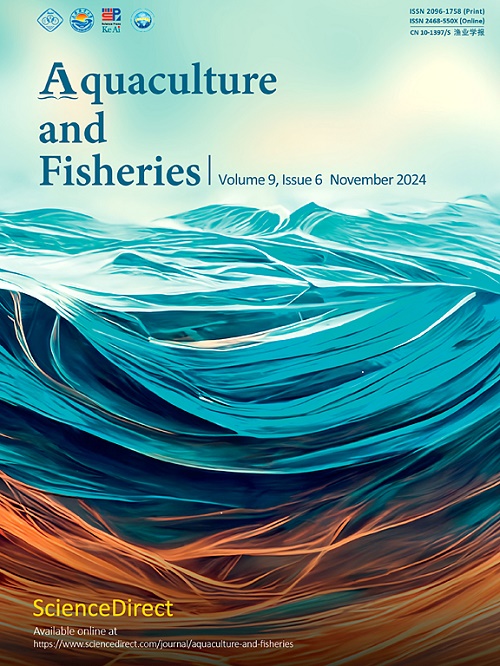Understanding size selectivity of trawls using structural models: Methodology and a case study on fish sorting grids
Q1 Agricultural and Biological Sciences
引用次数: 0
Abstract
Fish behaviour affects the performance of selection devices in fishing gears. Traditionally, fish behaviour in relation to selection devices is assessed by direct observation. However, this approach has limitations, and the observations are not explicitly incorporated in the selectivity models. Further, underwater observations and quantification of fish behaviour can be challenging. In this study we outline and use an indirect method to explicitly incorporate and quantify fish behaviour in trawl selectivity analysis. We use a set of structural models, which are based on modelling the actual processes believed to determine the size selection of the device, to discern which behaviours are most likely to explain the selectivity process. By bootstrapping we assess how confident we can be in the choice of a specific structural model and on discerning the associated behavioural aspects. We collected size selectivity data in the Barents Sea demersal trawl fishery targeting gadoids, where the use of a sorting grid is compulsory. Using our modelling approach, we obtained deeper understanding of which behavioural processes most likely affect size selectivity in the sorting grids tested. Our approach can be applied to other fishing gears to understand and quantify fish behaviour in relation to size selectivity.
利用结构模型了解拖网的尺寸选择性:鱼类分类网格的方法论和案例研究
鱼类行为影响渔具中选择装置的性能。传统上,与选择装置有关的鱼类行为是通过直接观察来评估的。然而,这种方法有局限性,并且观测结果没有明确地纳入选择性模型。此外,水下观察和鱼类行为的量化可能具有挑战性。在这项研究中,我们概述并使用一种间接的方法来明确地纳入和量化拖网选择性分析中的鱼类行为。我们使用了一套结构模型,这些模型基于对确定设备尺寸选择的实际过程的建模,以辨别哪些行为最有可能解释选择过程。通过自我引导,我们可以评估我们在选择特定结构模型和辨别相关行为方面的信心。我们收集了巴伦支海海底拖网渔业的尺寸选择性数据,目标是gadoids,其中使用分类网格是强制性的。使用我们的建模方法,我们更深入地了解了哪些行为过程最有可能影响所测试的分类网格的大小选择。我们的方法可以应用于其他渔具,以了解和量化与尺寸选择性有关的鱼类行为。
本文章由计算机程序翻译,如有差异,请以英文原文为准。
求助全文
约1分钟内获得全文
求助全文
来源期刊

Aquaculture and Fisheries
Agricultural and Biological Sciences-Aquatic Science
CiteScore
7.50
自引率
0.00%
发文量
54
审稿时长
48 days
期刊介绍:
 求助内容:
求助内容: 应助结果提醒方式:
应助结果提醒方式:


